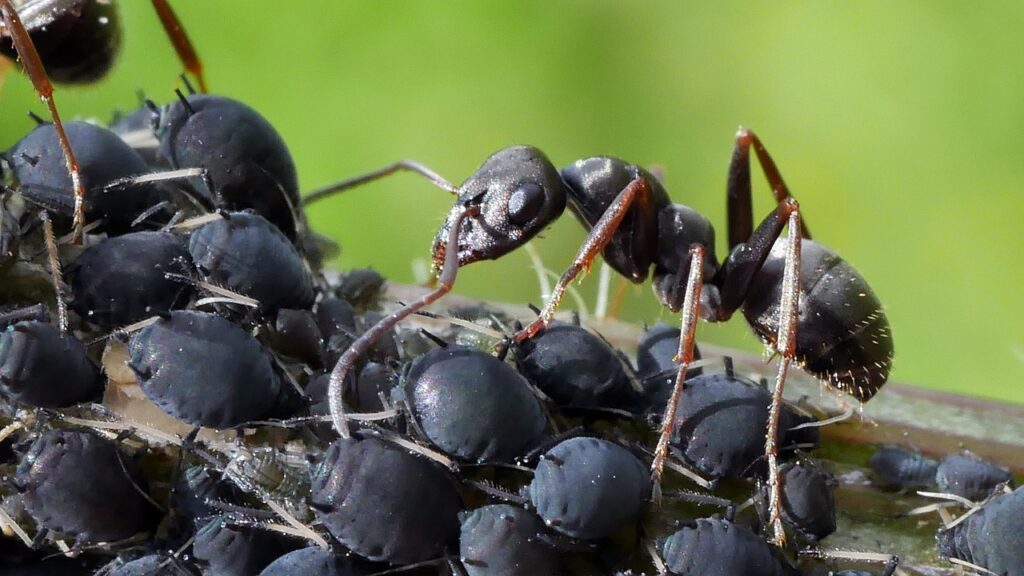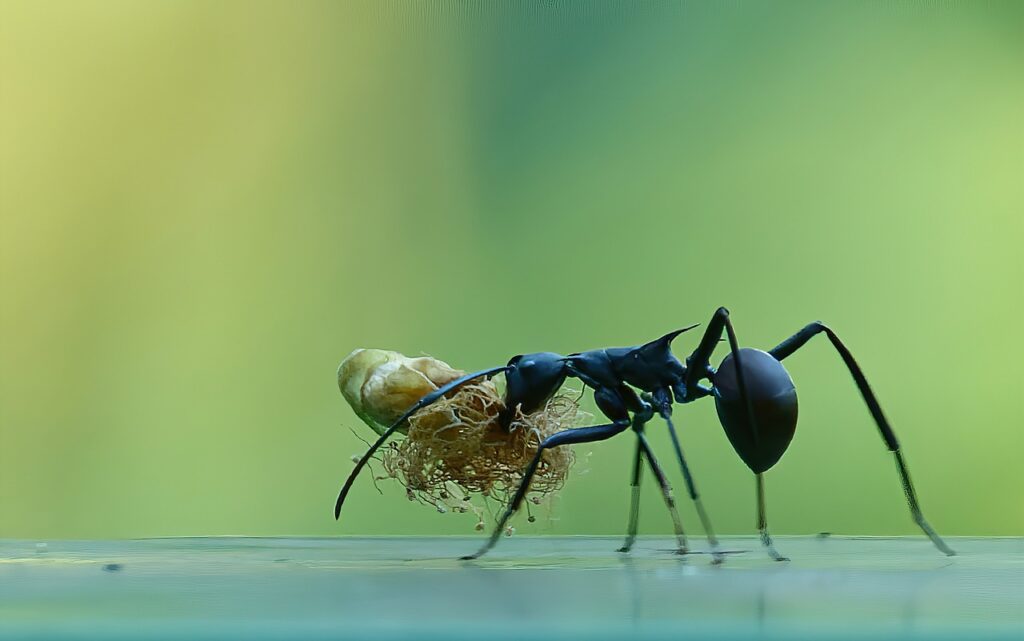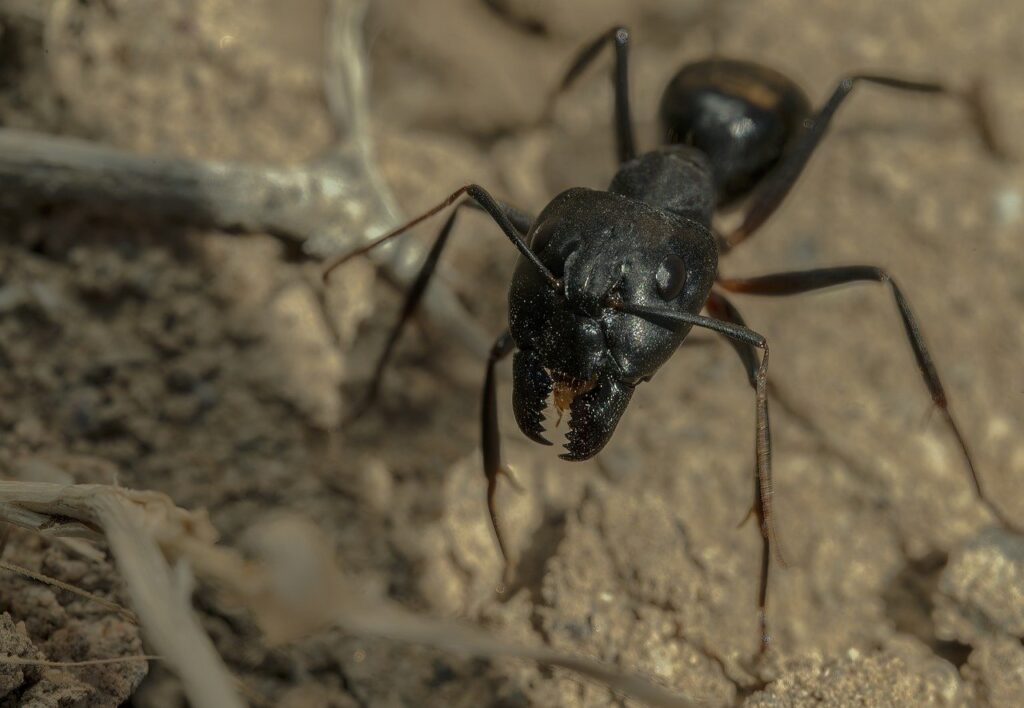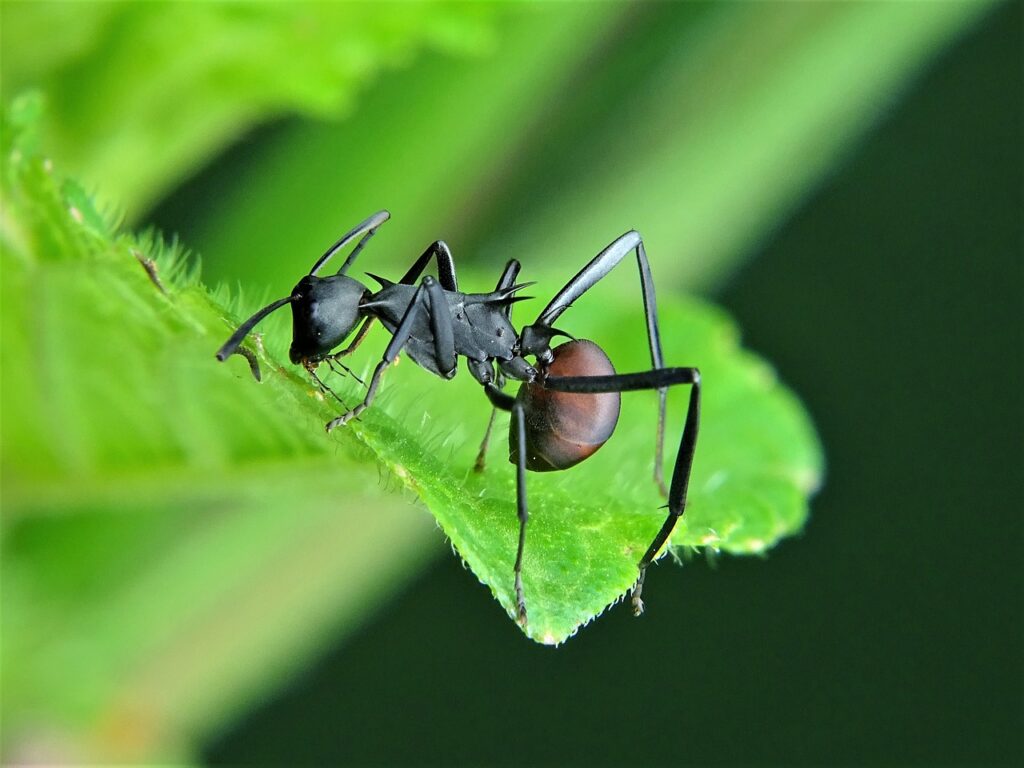Ants are among the most ubiquitous insects worldwide, with over 12,000 species recorded so far. These tiny insects play a pivotal role in our ecosystem, as they aerate soil, control other pests, and are food for some birds and mammals. However, when they invade your home or office, ants can become a nuisance and even a health threat. Two of the most common ant species that we encounter, are carpenter ants and black ants. In this blog, l discuss the key differences between carpenter ants vs black ants and how to control them effectively.
Carpenter Ants Vs Black Ants – Appearance

The most noticable differences between the two, are their size and color. Carpenter ants are mostly bigger than black ants and their body length can range from 6 to 13mm. They are dark in color, ranging from reddish-brown to black, and have a blunt, round thorax, which is joined to the abdomen by a narrow waist. Carpenter ants also have powerful mandibles, which they use to chew through wood and create galleries and tunnels for their nests.
Black ants are generally smaller in size, with a body length that can range from 2mm to 4mm. They are, without exception, black or a very dark brown color and have a slender waist and elbowed (geniculate) antennae. Black ants are not as hardy or tough as carpenter ants, and their mandibles tend to be weaker than carpenter ants.
Behavior and Habitat
Another obvious difference between carpenter ants and black ants is their behavior and habitat preferences. Carpenter ants are known to destroy and damage wood, which they use to create nests and tunnels. However, this does not mean that they eat wood like termites; they merely use it as a substrate for shelter. Carpenter ants prefer to nest in moist, dank environments like logs, tree stumps, and wooden buildings.

Black ants don’t tunnel or damage wood or cause damage to structures in the same way that carpenter ants do. They create their nests in a variety of habitats, including soil, rocks, and plant debris. In towns and cities, black ants usually infiltrate buildings through cracks, gaps, or holes in the walls or foundations. They often build their nests in wall voids, attics, or basements, and forage for food in the immediate surroundings.
Carpenter Ants Vs Black Ants: The Damage They Cause
There are critical differences between carpenter ants and black ants and the potential damage they can cause to structures and materials. Carpenter ants can be a major problem when it comes to wooden buildings, as they can weaken and damage the structural integrity of wood and cause rot and decay to set in. Their tunnels and galleries often lead to moisture buildup and this attracts other pests and fungi, further exacerbating the damage. Carpenter ants are also known to damage outdoor wooden structures such as decks, fences, and sheds.
Black ants are considered more of a nuisance pest than a structure-damaging pest. They do not, actively damage wood or other materials. They can infest food, bite, or sting if provoked. Black ants may attract other pests, such as flies or cockroaches, which can lead to further infestation.
Carpenter Ants Vs Black Ants: Best Control Measures

Now that we have discussed the differences between carpenter ants and black ants let’s move on to how to control them effectively. Ant control can be a complex and challenging task. Ants are social insects and it can be difficult to eliminate them completely. they can also be beneficial in many ways so make sure you have thought it through. Here are my tips and advice to help you with ant control:
Prevention is Key
To stop ants from entering your home or office, you need to identify and eliminate their entry points. Inspect and check your home’s foundations, walls, windows, and doors for any cracks, gaps, or holes. These are easy to seal with caulk or silicone. Don’t invite ants with food sources, keep your home tidy and clean and store all food in airtight containers and off the floor. Eliminate any sources of moisture, such as leaky pipes or faucets. Remove and/or repair any rotting wood or fallen trees outside.
Use Bait Stations
Bait stations are a great way to control ant colonies, as they allow the ants to take the bait back to their nests and feed it to the queen and brood. Always go for a high-quality bait station, specifically labeled for carpenter ants or black ants. Place it in areas where you see signs of ant activity. The don’t work instantly so give it some time.
Use Insecticides

Insecticides can also be used to control carpenter ants and black ants. Sprays, dusts, or baits labeled for ants can be very effective if used correctly. Always be mindful of the unintended consequences of chemical usage and always read and follow the label instructions carefully. It is also important to wear protective clothing and gear, and keep children and pets away from chemically treated areas.
Hire A Professional
If you have a really bad infestation or have tried different control measures unsuccessfully, it may be time to call a pest control professional. Professionals have the expertise, experience, and equipment to identify and eliminate ant colonies. They can also provide you with an ongoing, tailored, treatment plan and advice on how to deal with future or recurring infestations.
To Wrap Up
Carpenter ants and black ants are very common pests that have different appearances, behaviors, habitat preferences, and potential damages. Carpenter ants are bigger, varied in color, and can cause significant damage to wooden structures, while black ants are smaller, dark, and are considered a nuisance pest. To avoid ant infestations, use preventative measures, such as sealing entry points, keeping your home clean and food-free, and removing sources of moisture, are essential. If you have an infestation, using bait stations, insecticides, or calling a professional pest control service can help you control the ant population.

